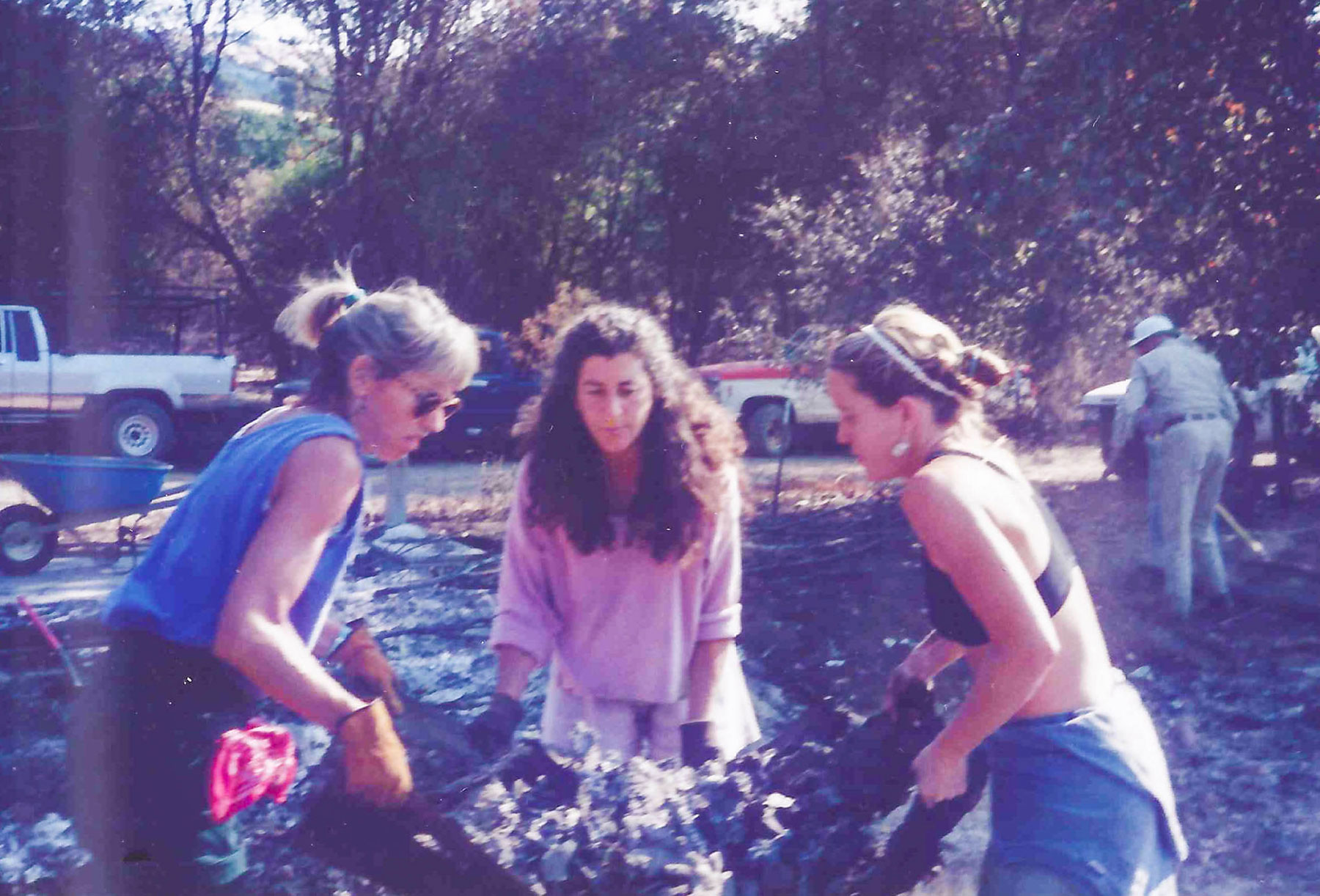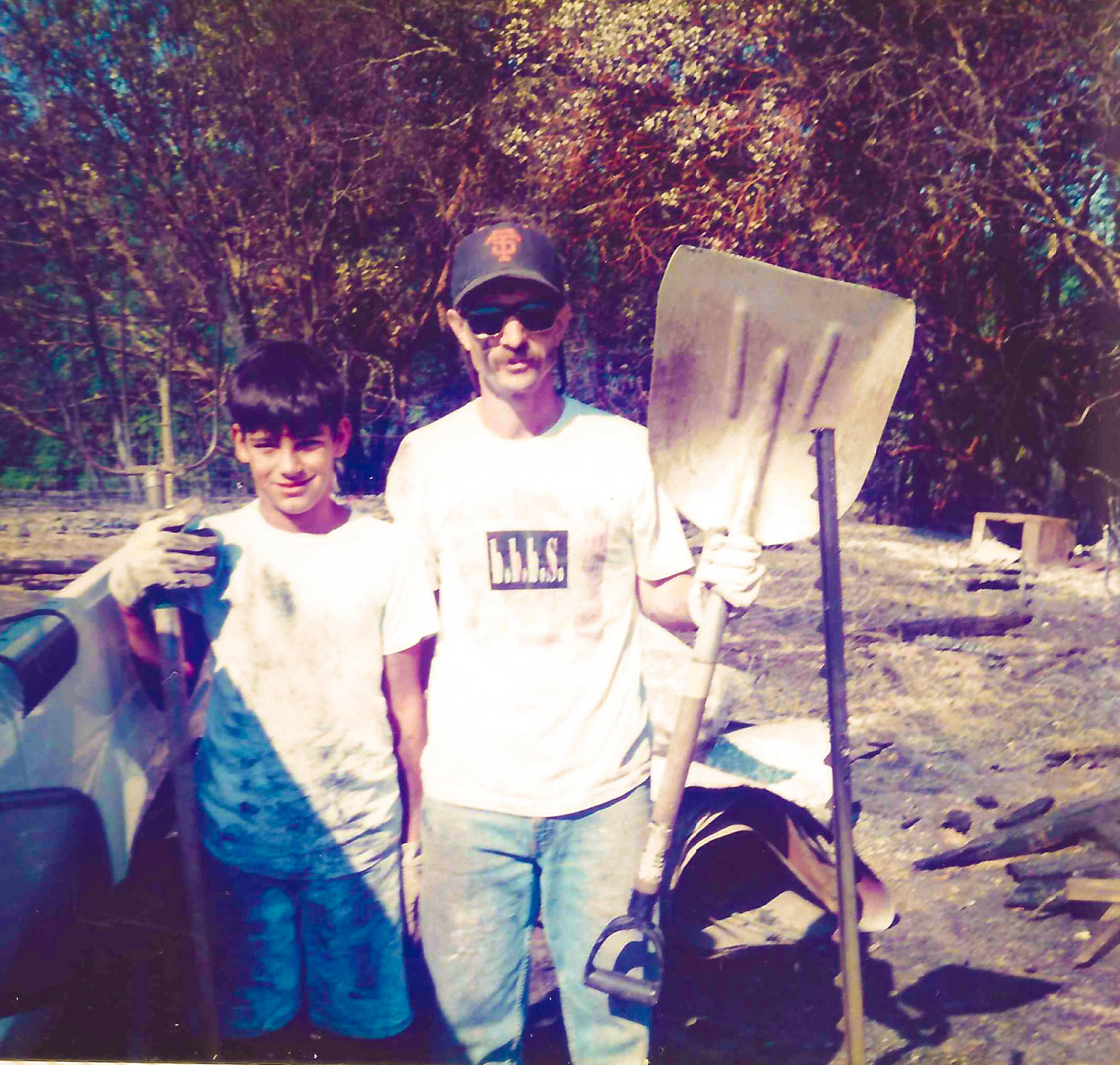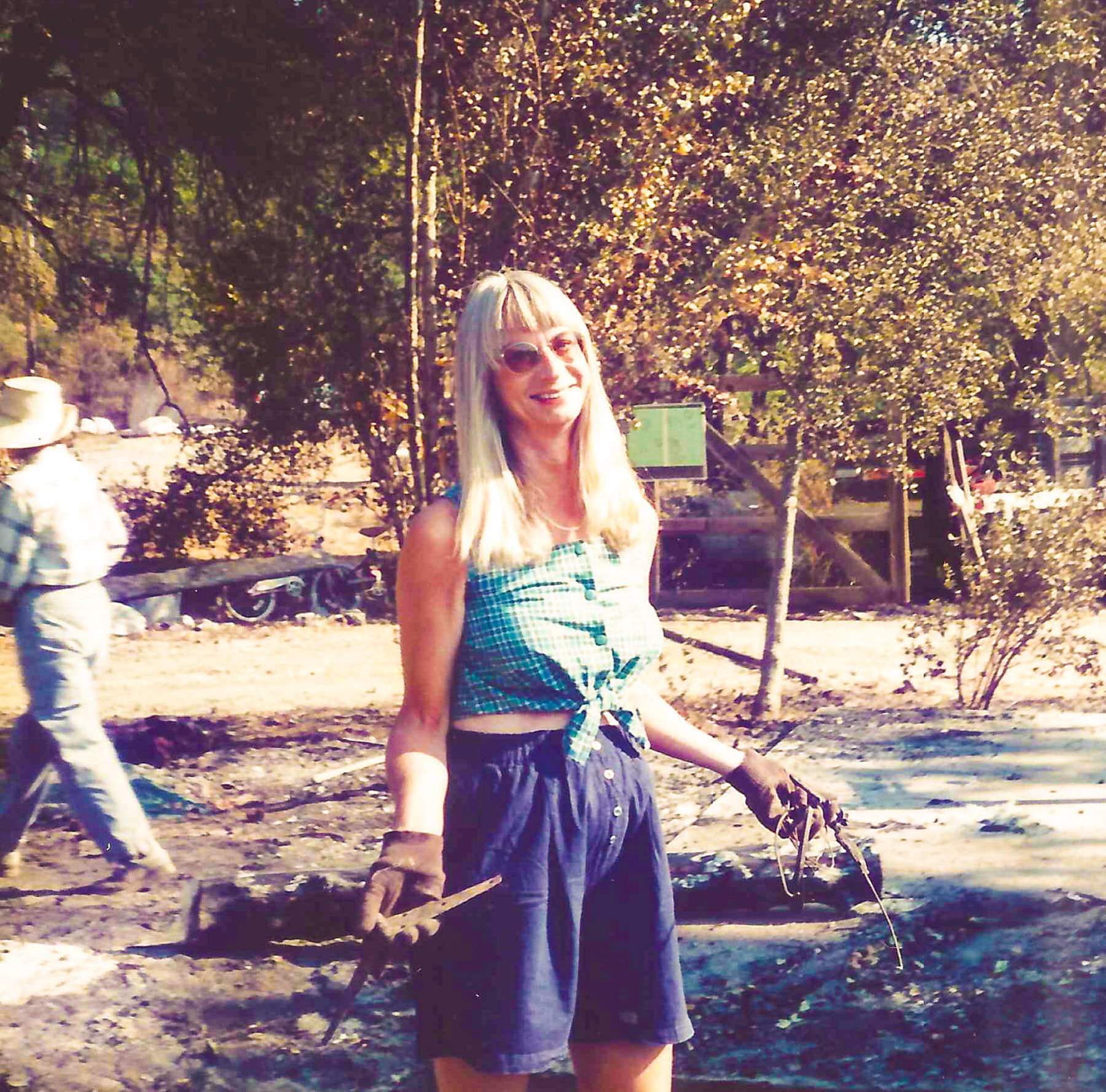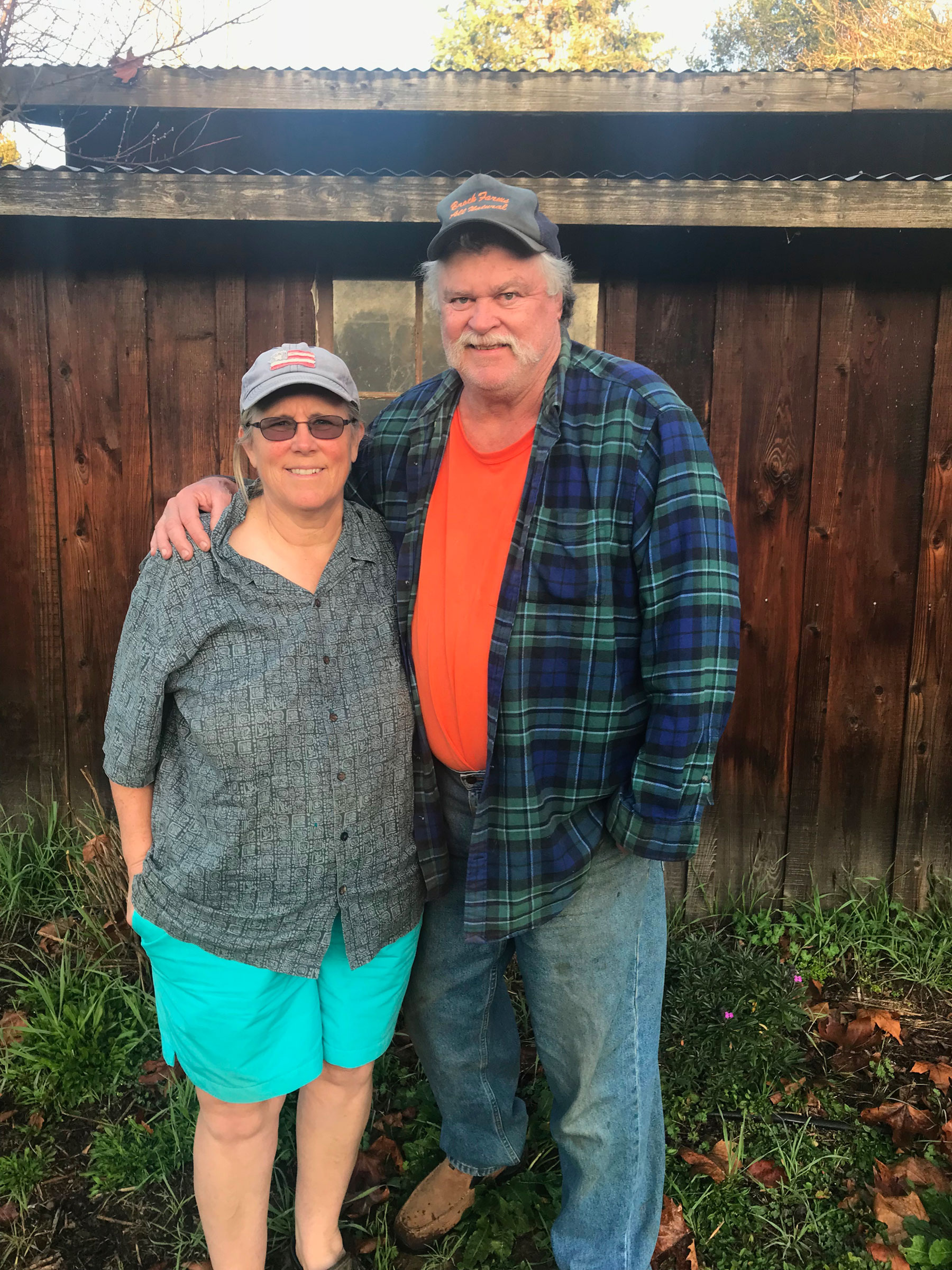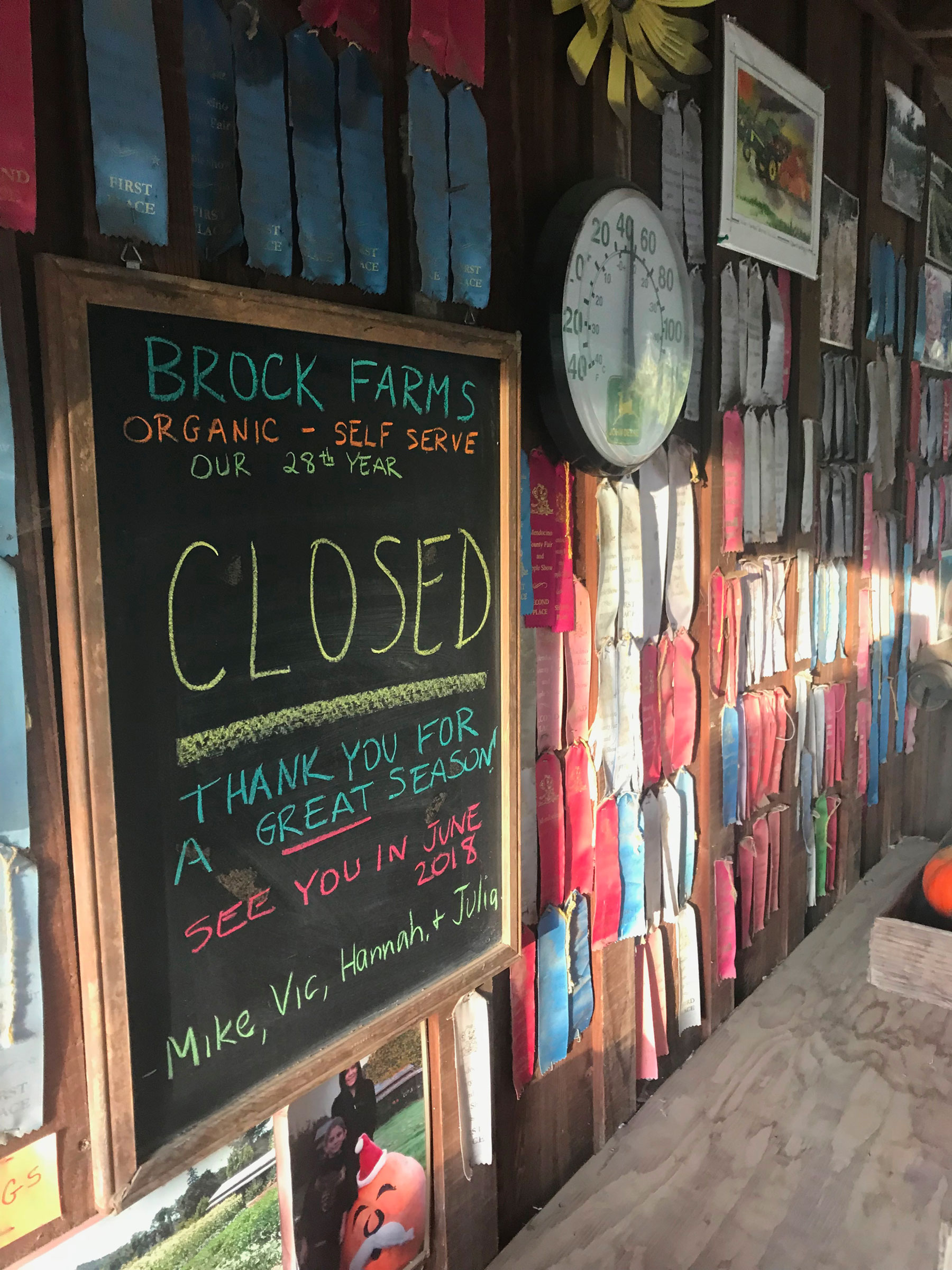The Road to Recovery

How Brock Farm came back after a fire
by Torrey Douglass
It was a hot, windy morning at the end of August, 1996, when Mike Brock walked to the edge of his farm outside of Boonville to investigate some smoke that had caught his eye. The next moment he was tearing back across the fields to his home, yelling for his wife to get out. Vickie, who had been sleeping with their baby girl inside, said “I’ve never seen him run so fast. I had just enough time to grab Hannah and my purse, jump in the car and drive out through the flames.”
CDF would later attribute the fire to a car that had pulled off to the side of Anderson Valley Way, bringing its hot exhaust pipe in contact with dry grass. After the grass caught fire, the Eucalyptus trees did too, sending embers across the road toward the Brock farm and neighboring properties. The combination of wind and late-summer dryness allowed the fire to spread with devastating speed.
Vickie, then a schoolteacher, had joined Mike on the farm in 1987. “He was born a farmer,” she observed. “Give him a hammer to build something, a plant to stick in the ground—it’s what he loves.” After fleeing the fire they retreated to a neighbor’s home on a hill above their farm, and from there they watched the blaze consume what had been nine years in the making.
It was the time of year when the Brock’s crops were at their peak, bursting with red peppers, tomatoes, and other vegetables ready to be picked and brought to market. In addition to losing the fruit of their season’s labor, the Brocks lost their old barn, outbuildings, an uninhabited house on the property used as storage for family heirlooms, and, worst of all, the animals in their pens.
But the fire didn’t take everything. Their home, built from old-growth redwood, got licked by the fire but did not burn. They were able to sleep in their own bed that very night, under a cover sporting tiny spot burns caused by embers that had floated in through unscreened windows. Even though the blaze was out, through the night fire fighters continued to walk the property in search of hot spots.
The next morning people arrived and started sifting through the ashes. A self-appointed crew rebuilt the fencing around their four acres to replace its wooden predecessor. Later, a community benefit for the Brocks and their neighbors, Jan and Mike McDonald, who had lost their barn, gave them $10,000 to put toward replacing lost equipment. Others dropped off power tools, food, and money. “I came out of this feeling like I owed everyone,” Vickie remembers. “That’s what has stayed with me the most. The amount of kindness that came out of it was incredible.”
There’s no arguing that fire takes more than it gives, but there are benefits. The blaze cleared untended areas of the property, leaving land open for cultivation where blackberries and scotchbroom previously dominated. (Not all the clearing was welcome, though. A stand of oak trees that had muffled traffic noise were lost, so the farm is not as quiet today as it used to be.) The following growing season showed a marked decrease in weeds. After ten years working together on the farm, the chance to start over allowed Mike and Vickie to apply lessons learned and make new choices. They invested in a different style of drip irrigation and built a new barn that now houses not only animals, but equipment and their supply of soil amendments as well.
A fire can also supercharge a soil’s fertility. Neighbor and farmer Stephanie Tebbutt says “The First Nation people knew ‘fire brings fertility.’ While high heat fires can damage the top layer of humus, grass or brush fires can leave a layer of carbon that leads to a ‘POW’ of fertile release the next spring.” Following a fire, seeds that are dormant, sometimes for decades, can germinate, and wildflowers are particularly abundant.
The number one concern of a farmer after a fire is preserving topsoil by preventing erosion, advises Stephanie. “If there’s time, plant a cover crop like buckwheat—it’s great for bees and soil.” But if the fire occurs later in the year, as most do, there won’t be time for that. In those cases farmers can use mechanical means like straw logs to maintain that precious topsoil.
It’s been 22 years since the fire at Brock Farm, and remnants still turn up from time to time. Just recently Vickie was digging in the field and came across a chunk of charred plastic. Now retired from teaching, she spends her days attending to farm projects, amending soil, and encouraging the tomato plant seedlings in her greenhouse that will produce their famous Brock tomatoes come summertime. Find them at the Boonville Farmers Market or Brock farm stand at the bottom of Peachland Road. Their juicy perfection is the essence of summer and evidence that we can come back from almost anything with a strong community and a whole lot of hard work.

